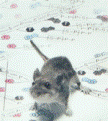Papers in the Biological Sciences

Jay F. Storz Publications
Document Type
Article
Date of this Version
3-10-2012
Citation
Circ Res. 2012 March 30; 110(7): 915–921. doi:10.1161/CIRCRESAHA.111.255398.
Abstract
Evolution has provided a number of animal species with extraordinary phenotypes. Several of these phenotypes allow species to survive and thrive in environmental conditions that mimic disease states in humans. The study of evolved mechanisms that responsible for these phenotypes may provide insights into the basis of human disease and guide the design of new therapeutic approaches. Examples include species that tolerate acute or chronic hypoxemia like deep-diving mammals and high-altitude inhabitants, as well as those that hibernate and interrupt their development when exposed to adverse environments. The evolved traits exhibited by these animal species involve modifications of common biological pathways that affect metabolic regulation, organ function, antioxidant defenses, and oxygen transport.
In 2006, the National Heart, Lung, and Blood Institute (NHLBI) released a funding opportunity announcement to support studies that were designed to elucidate the natural molecular and cellular mechanisms of adaptation in species that tolerate extreme environmental conditions. The rationale for this funding opportunity is detailed in this Special Article, and the specific evolved mechanisms examined in the supported research are described. Also highlighted are past medical advances achieved through the study of animal species that have evolved extraordinary phenotypes as well as the expectations for new understanding of nature’s solutions to heart, lung, blood, and sleep disorders through future research in this area.


Comments
NIH Public Access.